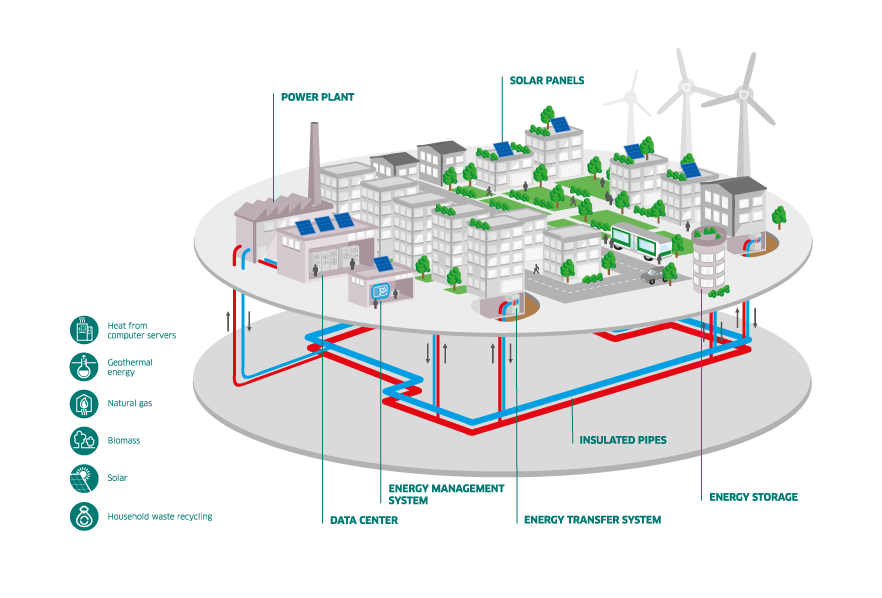District heating
In a district heating system – also known as a heat network – the heat comes from outside of the hotel instead of being generated within its own boiler. Heat networks can collect heat from multiple sources – including low or zero carbon sources – which means they reduce the impact of heating on the environment.
The InterContinental Hotel at the O2 was linked to the local heat network after designers convinced the developer of its resilience.
Located next to London’s O2, the five-star InterContinental Hotel is the center piece of a new, mixed-use development on the River Thames. The 19-storey, 453-room hotel and conference center forms part of a scheme by Grove Developments for Arora Hotels, and includes 140 apartments in the 24-storey Arora Tower.
The hotel’s leisure facilities include a health spa, several restaurants and a 3,100 m2 ballroom, which has room for 3,000 seats and can be divided into 14 independent zones. There are 19 additional meeting rooms in the conference center, as well as an organizer’s office and 1,600 m2 of pre-function space.
The developer wanted a highly sustainable scheme, and the hotel was designed to achieve Breeam Very Good, while the residential units achieved level 4 of the Code for Sustainable Homes. To meet green targets, the project team specified low-energy heating, ventilation and air conditioning, and proposed the scheme be connected to the Greenwich Peninsula district heating system, operated by Pinnacle Power.
For the hotel, it was critical that the heat network delivered the performance expected by guests of a five-star hotel. The requirement was for a resilient system able to supply year-round heat with a highly variable seasonal load; there was no option for downtime in the heating system.
Connecting to the heat network would reduce plant capital costs and free up more space on the development. The carbon cost of the energy is also reduced. Typically, a good heat network offers 0.15 kg CO2 per kWh compared with around 0.25 kg CO2 per kWh for standard gas boilers. Pinnacle also offered an improving carbon performance in the future as the peninsula network progressed and more efficient central plant was installed.
